There is no doubt that today’s software companies are moving to a “software-as-a-service” model instead of a perpetual licensing model for locally installed software. Microsoft is now delivering their Office line of products via the Office 365 subscription model. In fact, Office 2019 has been said by Microsoft to be the last full install of Office 2019. They have also made it increasingly less desirable to install the full Office 2019 local install as opposed to the Office 365 delivered apps for the Office installation. Recently, with my Visual Studio subscription, I wanted to take a closer look at the differences between the two as well as the installation process between the versions. Let’s take a look at Office 2019 vs Office 365 Differences and Installation.
What are the differences?
Microsoft has a nice article found here that goes into the details of the differences between Office 2019 and Office 365 delivered applications. Essentially, when you download Office 2019, it is a one-time purchase that means you pay a single, up-front cost for getting the Office applications delivered on your computer. This is available for both PC and Macs. As you recall, I mentioned Microsoft has made it less desirable to download and install this Office variant. The one-time installation has no upgrade options for future Office releases in terms of pricing. If you plan to upgrade to the next Office release, you have to buy it again at the full price.
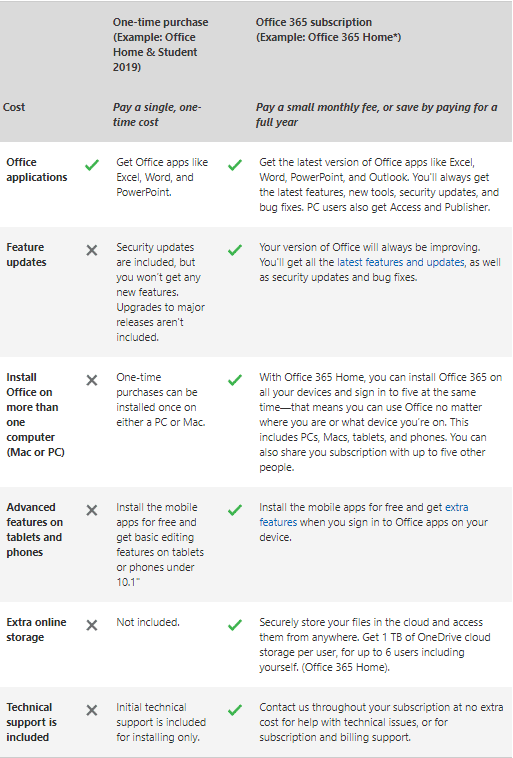
Contrasting Office 365 with the Office 2019 is a subscription service that allows updating the Office software to the latest and greatest releases as soon as they come out since the software is delivered via the subscription. Microsoft has thrown in additional features and benefits that you get with the subscription and not with the full-blown Office 2019 installation. This includes something that is highly desirable today – cloud storage. With Office 365 subscriptions you get extra online storage and cloud-connected features for online collaboration. Additionally, as mentioned you get the latest features, fixes, and security updates at no cost as well as tech support. One other tremendous benefit when compared to a one-time purchase which is good for only one PC, the Office 365 subscription can be shared with up to five other people.
A concern that some may have when thinking about the subscription based model that is being pulled from the Microsoft cloud vs the one-time install of Office 2019 is Internet connectivity. However, actually, you don’t need to be online to use Office after the installation and activation of the software. OneDrive requires connectivity if you are using the online cloud storage, however, i you are using the OneDrive desktop app, any changes are cached until the connectivity is restored locally so essentially allows you to work offline.
Office 2019 vs Office 365 Differences and Installation
The first thing I am doing below is simply navigating to the Office 365 key and download portion of my Visual Studio subscription. This allows generating a new key as well as downloading the installation, which initially is a wizard of tying the key to the Microsoft account of choice.

Below, as you can see, when you choose to download, you get the (3) step process to sign in, then enter a product key, and then finally, download the Office 365 installation. The first part of the process is signing into a Microsoft account. Note, as you see below, you can sign in, or actually create a new account during this process to complete the download and installation of Office 365. I have an account so I will be signing in.
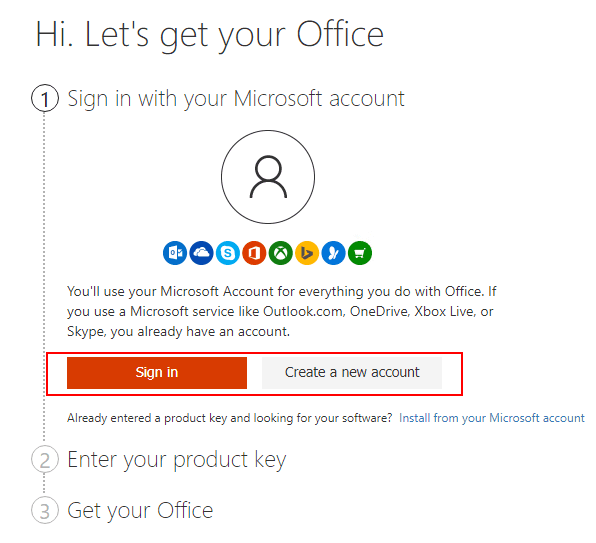
Below, entering the password for the chosen Microsoft account.
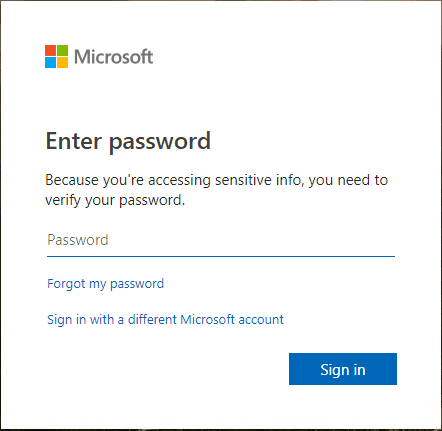
After you sign in, you will see your account listed. Next, we need to enter the product key. I generated a new key in Visual Studio to use.
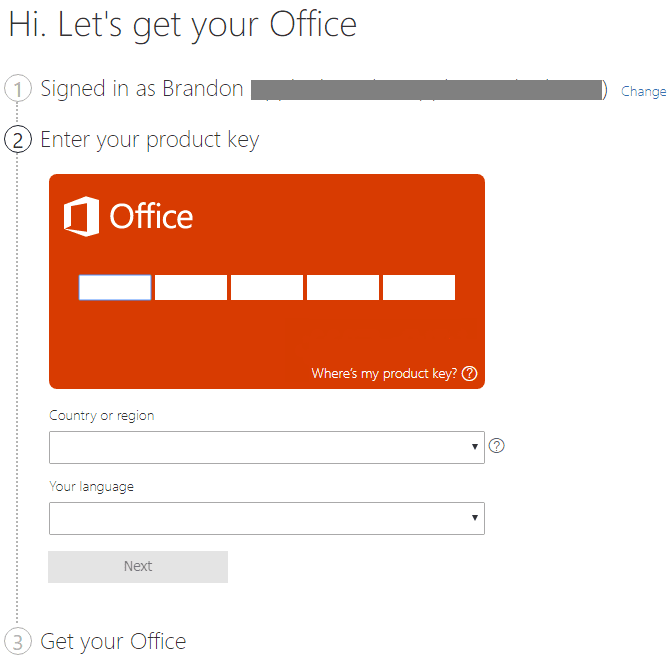
Key generated, and also confirmed the country or region and the language for the installation.
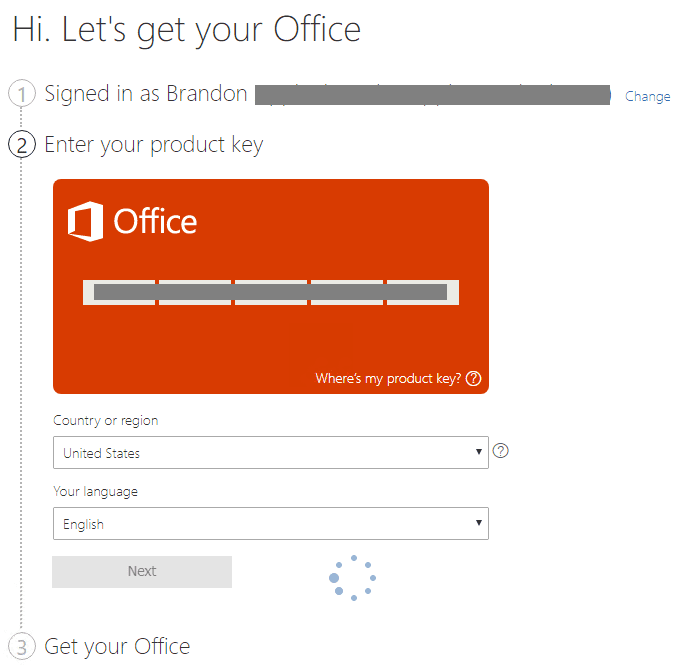
You are now ready to get your Office installation. Click the Next button.
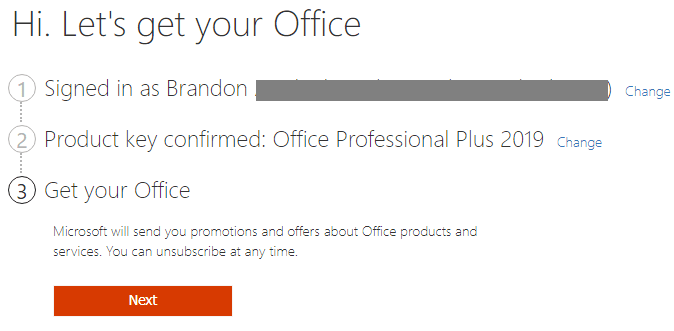
The next screen I am not a big fan of. The screen can be very generic, especially if you have generated and installed multiple copies of Office 365. There is no real way to see in an intuitive way which installation is which. The product key does not match what you see in the Visual studio dashboard. IMHO, Microsoft needs to give some attention to this screen in the process to make it much easier to tell what is going on from an accounting perspective of which keys are tied to which workstation. Even querying the workstation name and placing this here would be a great start.
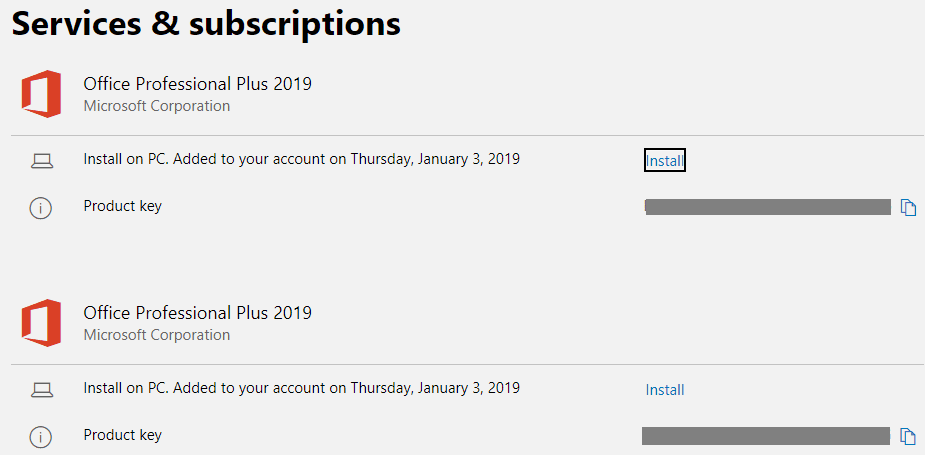
When you click Install you will then see the box pop up for a last minute question on other options as far as installers. Here, simply click the Install button again.
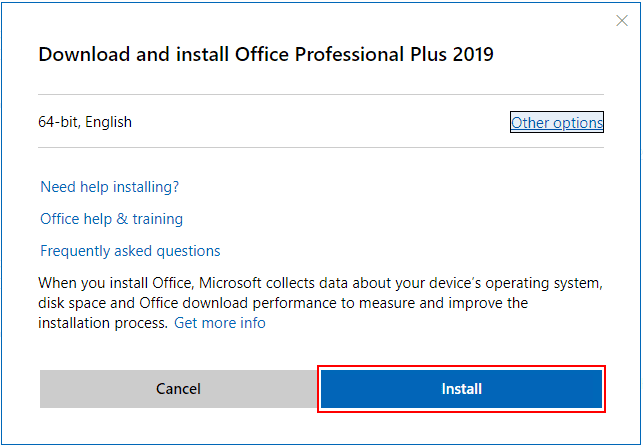
This will download, not a full installation file, but rather an “online” installation file of around 7 or 8 MB that will stream the installation across to install locally.
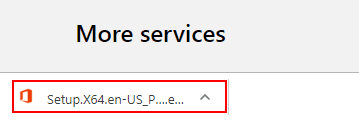
Click on the downloaded file and the installation process begins.
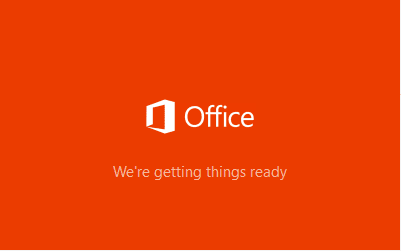
The great thing about the Office 365 installation is that you don’t have to configure anything. The installer simply installs the Office 365 (Office 2019 Pro Plus) installation on the workstation where you are running the installer. The installation will simply progress until it finishes.
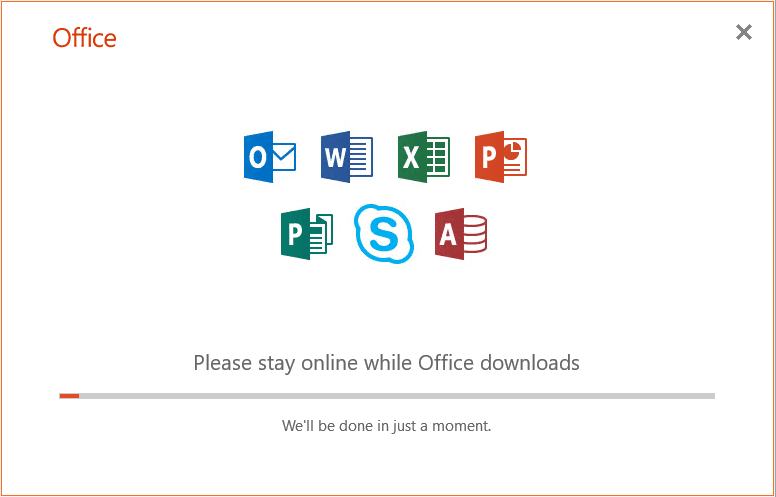
After a few minutes, the installation of Office should complete successfully and is ready to use.
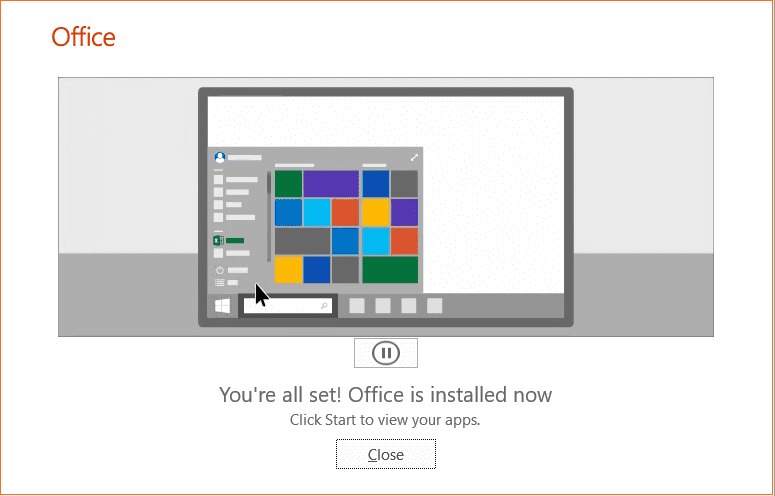
Takeaways
There is no question about it, the software subscription and delivery service methodology is now the wave of the future. Software companies like Microsoft are steering away from the one-time perpetual installs of software and coaxing customers to the subscription based delivery of software. Some may have seen this as a downside in times past, however, IMHO, I think this is a beneficial way to go from an end user perspective. The features and ROI of the software subscription is way more appealing than what you get with the one-time installers. When looking at the Office 2019 vs Office 365 Differences and Installation, there are only a few steps to getting up and running with Office 365. The comparison between the features and functionality hopefully will help make it obvious what you get with both variants. Be sure to weigh out the benefits and features between both. Most will no doubt see the advantage of choosing the Office 365 route for installing and using Office.
Google is updating how articles are shown. Don’t miss our leading home lab and tech content, written by humans, by setting Virtualization Howto as a preferred source.




